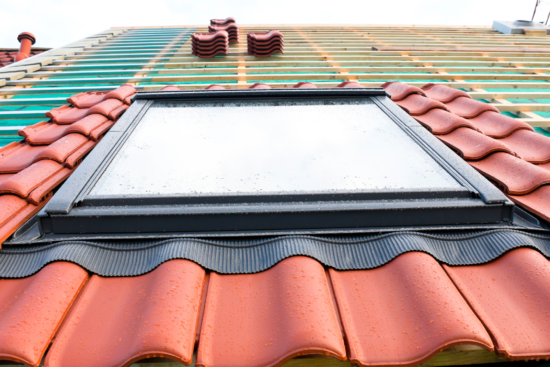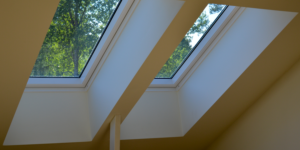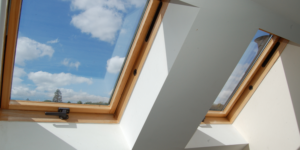© All Rights Reserved | Roof Replacement and Repair - Zaman Roofing LLC. | Website Design & CT SEO Powered by High Point SEO CT
- Google Rating5.0Based on 33 reviewsZaman Roofing - CT Roofing Contractors & Roof Repair5.0Sergey Y."Zaman Roofing” recently completed a roof replacement project in our condo complex, and we are extremely satisfied with their service. From start to finish, their team demonstrated professionalism, efficiency, and exceptional craftsmanship. They were prompt in their communication, providing detailed explanations and answering all our questions. The crew arrived on time, worked diligently, and completed the project within the estimated timeframe.Not only did Zaman Roofing exhibit outstanding technical skills, but they also ensured minimal disruption to our daily activities. They took great care to protect our property, cleaning up thoroughly each day and leaving no trace of debris behind.The quality of the new roof is outstanding. Zaman Roofing used top-grade materials and paid attention to every detail, resulting in a sturdy and visually appealing finished product. The roof has significantly enhanced the overall appearance of our condo complex.We would highly recommend Zaman Roofing to anyone in need of roofing services. Their professionalism, expertise, and attention to customer satisfaction make them a reliable choice for roof replacements. We are grateful for their excellent work and would not hesitate to hire them again in the future.Christopher Z.Zaman Roofing was AWESOME!!!! This is my third time doing a roof in CT on my third home and Zaman did an outstanding job on my rather unique roof line. They even replaced a skylight. I needed a Roof Contract in place before insurance would allow the purchase because the seller was a DeeBag. Zaman worked with my realtor, banker, etc and even waited patiently while the seller delayed the process by 4 months. The week I closed, Zaman Roofing was up and at em. Stripping, prepping and replacing. In and Out. Property was nice and clean after the work was complete. I would highly recommend.Steve TZaman Roofing, located in Berlin, CT, truly excels in providing top-notch roofing services. I am absolutely thrilled to give them a well-deserved 5-star review for their outstanding work. They have proven themselves as experts in roofing Berlin CT, and I couldn't be happier with the results.When it comes to roofing in Berlin, Zaman Roofing stands out from the competition. Their team of skilled professionals demonstrated exceptional attention to detail during the installation of my new roof. They meticulously handled every aspect of the project, ensuring both aesthetics and durability were top-notch.What impressed me the most was Zaman Roofing's commitment to customer satisfaction. From my initial contact with them, they were responsive, courteous, and eager to understand my specific roofing needs in Berlin. Their exceptional customer service throughout the entire process made me feel valued as a client.Zaman Roofing's expertise in roofing Berlin is truly commendable. They have an extensive portfolio of successful projects throughout Berlin, CT, showcasing their skill and knowledge in a variety of roofing styles and materials. Regardless of the complexity of the job, they have the necessary resources to deliver exceptional results.I cannot emphasize enough how satisfied I am with Zaman Roofing's services in Berlin, CT. Their professionalism, reliability, and dedication to their craft are unparalleled. If you're searching for exceptional roofing services in Berlin CT, Zaman Roofing is the company to choose. They will exceed your expectations in every way.In conclusion, Zaman Roofing unquestionably deserves a stellar 5-star rating for their exemplary roofing services in Berlin, CT. Their expertise in roofing Berlin and roofing Berlin CT shines through in their exceptional workmanship and customer service. I highly recommend Zaman Roofing for all your roofing needs.Gary G.Zaman replaced the roof on my 2,200 sq. ft. colonial in 2015. The workmanship was perfect. Unfortunately, over time, the top-of-the line shingles discolored. He was totally supportive in getting the manufacturer to replace them at no cost to me. He just replaced the roof with the new shingles. It was another perfect job. It was completed in one day. The crew was great and they cleaned the area spotless.Chris DWe used Zaman Roofing for our Roof and Gutter Replacement, I acquired 5 quotes for the work and found Zaman to be the most reasonable, it was a Good Decision to choose Zaman Roofing, Seweryn was Professional in every aspect and the Clean-up was nothing short of Amazing, I would Highly Recommend using Zaman RoofingRobert D.Excellent Service and Value - great crew and easy to deal with - highly recommended !Sunghoon P.Great work and reasonable price. I am so happy with their service. I asked a bunch of questions before and after the service and his responses were very prompt and straight to the point. Highly recommend.Adrienne M.I am so pleased that I used this company. My new roof looks fantastic. Such a hard working crew. Seweryn was informative and professional. Price was very completive. Don't hesitate to use them you will be very satisfied. Highly recommend!Nancy M.Good communication, timely response and knowledgeable. Very happy with our experience and highly recommend this company.Beata M.We used Zaman for our roof replacement recently and are very pleased. They replaced our roof in one day and gave us a very competitive quote. Good quality of work. Highly recommended.Lori K.They were here when they said they would. Professional & left everything neat ,cleaned up everything. They were in & out in a day & a half. Would recommend Zaman roifing.Dan R.A+ service, professional and quick response time.Anna G.Zaman and his crew provide great workmanship they installed new roofs they take great pride in the work they do. They were punctual and did a amazing job with the roof installation and clean up. Highly recommend Zaman Roofing to family and friends. Thank you for the opportunity to work with such a amazing contractorScott M.Awesome contractor, I would highly recommend him to family & friends. Seweryn & his crew were here on time & worked diligently. They were the happiest workers I've ever dealt with (I am a former construction project manager with the Federal government). Any & all questions were answered. My neighbors couldn't believe they finished the job in one day & complimented how great the new roof looks.Clement D.Great roofing contractors. I love to recommend it to my friends and family.Karen 9.With the quality, price, timeliness, all round nice guy and great crew, Zaman Roofing LLC is what other companies aspire to be.... Clean, helpful and a pleasure to recommend....james C.Excellent experience from start to finish, all appointments and work times met in a timely fashion, workmanship and clean up left nothing to be desired.Would be a definite recommendation, very pleased.Margaret B.I had obtained multiple quotes and did my due diligence research and Seweryn Zaman came back with fair price and good recommendations. He was professional, explained everything that he was going to do and never once he rushed me during decision process. He showed up on time with his hard working crew and finished my roof in one day. I was amazed with his crew who worked like busy bees. Very impressed with the clean up process and the end product. Two months after he finished my roof he was still helping me deal with the insurance company making sure I had everything I needed. Thank you SewerynSteve B.Very professional and easy to work. The crew came in, replaced my roof and then cleaned up everything! Highly recommended.Jim O.Competitive quote among four others. Seweryn Zaman provided larger color samples of the shingle colors we were interested in. He obtained the building permit, showed up on the day expected with his entire crew. Our older roof was on 24" trusses and needed more plywood replaced than anticipated. He got the additional sheets replaced on the day of the re-roofing. The crew worked with him late until the job was done and picked up every piece of old debris. The roof passed final town inspection with no concerns. Zaman Roofing is easy to deal with; he's responsive on text messages and phone calls. I used them in the past for an emergency repair and he found a well-hidden leak from the builder.Dale C.The crews did a good job, and the leader of the crew did a great job when they replaced the roof of my house in Farming on 7/6&7 this year. When they worked on the project, they worked professionally and in detail. We are very pleased with the work they have done, and highly recommend people to have the company worked on their roof projects.Forrest B.Zaman's was very professional, excellent quality of work and very responsive to our needs. This roofing experience was excellent from start to finish and provided an excellent value. Would certainly recommend them to any friend.Yonatan M.We used Zaman Roofing to replace our roof in 2019 and could not be happier with the service and product. A highly professional company and great personal interaction with the owner. The workers took great care of our landscaping, and the owner was there frequently to supervise the work and take care of finishing touches like flashing the chimney. We have had zero issues since then and highly recommend this company.Quinn V.Zaman was awesome. He was communicative, on-time, and was able to give me a quick inspection of our roof despite the rain. I rarely have a contractor tell me that I didn't need to spend any money, but Zaman told me my roof was fine for the next several years.magdalena K.We recently used Zaman Roofing to replace our 26-year-old roof. Right from the start they were great! Sevy was extremely professional and knowledgeable and gave us a great quote. Everything was done as they described and the final project looked great. The owner was on the job from start to finish as he promised.Ariadna G.Our experience with Zaman Roofing was excellent. I was very impressed with both their work and their customer service. Seweryn was very knowledgeable and professional.Larry G.What a wonderful business. Very responsive. They showed up exactly when expected, completed the project quickly and accurately and left no trace after clean up. All with a very competitive price. I would highly recommend Zaman to anyone looking to have roofing work done.STEVE R.I was very pleased with the roof and gutter repairs performed by Zaman Roofing on two of my buildings. Good workmanship and fair prices, I would recommend and use again.Danielle D.These guys stripped and reshuffled my roof is 1 day! They did an awesome job. Roof is beautiful. He uses a dump trailer which is great and they cleaned up well. Very happy with the work. Also pricing was fair.

When to Consider Skylight Installation: Adding Natural Light to Your Space
Category: Roof Maintenance • November 2, 2023
Bringing nature within will boost your home’s appeal. Add natural light—what better way? Window are necessary for sunshine, but skylights may change your room! These elegant and practical architectural features fill your spaces with natural light and improve your physical and mental health.
The different types of skylights
Skylights are available in many styles to meet your demands and aesthetic choices. Some skylights are fixed and cannot be opened. In areas without ventilation but wanting natural light, these are great.
Open ventilation skylights to bring fresh air into your home. Remote controllers or manual cranks make these skylights easy to use. They work well in humid spaces like restrooms and kitchens.
Tubular skylights offer flexibility. These smaller domes reflect sunlight into your room through a tube. Tubular skylights are ideal for low-ceilinged areas or where regular skylights cannot be installed.
Skylights that save energy are also available. These have many glazing layers to prevent heat transfer and preserve appropriate indoor temperatures year-round.
Make sure your skylight matches your home’s architecture and provides enough natural light. An expert can help you choose the best skylight for your needs.
Each type has its own perks and characteristics, so investigate and explore all alternatives before choosing one that will improve your space’s aesthetics and functionality.
Factors to consider before installing a skylight
Skylights give natural light and open up a room, making them interesting additions. However, various variables must be considered before deciding.
Assess the skylight installation site. Consider how the sun shines throughout the day and whether trees or other buildings hinder it. Make sure your skylight gets enough sun.
Next, consider the skylight size and shape. This depends on aesthetics and practicality. Larger skylights add light but may reduce energy efficiency and temperature management.
Installing a skylight may increase heat loss in winter or leak if not properly sealed. These drawbacks must be weighed against the benefits of natural light.
The process of installing a skylight
Installing a skylight requires numerous measures to ensure success. First, decide where your skylight should go. Consider sun position and barriers like trees or surrounding buildings.
Next, choose a skylight that meets your demands. Fixed, ventilating, and tubular skylights are provided. Each style provides different natural light and ventilation.
After choosing a skylight, prepare for installation. Cutting an aperture in your roof or ceiling and waterproofing may be needed.
Installation follows. This usually involves connecting the skylight frame and flashing around the opening.
To avoid leaks and drafts, caulk gaps and cracks after installation. Skylights need regular maintenance to stay in good shape.
Following these steps and consulting a professional installer if needed, you can enjoy the benefits of natural light from a nicely constructed skylight!
How to maintain your skylight
Any space benefits from skylights, which bring natural light and openness. Your skylight should be properly maintained after installation to preserve its longevity and functionality.
Skylights need regular cleaning to look their best. Abrasive cleansers can scratch glass, so wash it with a light detergent and water. The skylight interior and outside should be cleaned periodically.
Regular skylight inspection and cleaning are essential. Cracked glass or water stains on surrounding surfaces indicate damage or leakage. Fixing these issues quickly can prevent future damage and costly repairs.
Skylight seals should also be monitored. These seals may degrade or loosen, causing leaks. Professional sealant repair is recommended if you discover cracks or deterioration.
Trim neighboring trees and branches that could fall on your skylight during storms or severe winds. Hazard removal can preserve your investment and save money on repairs.
With these maintenance instructions, your skylight will provide natural light for years to come!
Alternative ways to add natural light to your space
Skylights are not the only way to increase natural light. Your home can be brightened and made cozy with various approaches.
Glass doors and wider windows are popular alternatives. Increase the size of your windows to maximize natural light. Rooms with minimal sunshine benefit most from this.
Strategically placing reflective surfaces throughout your environment is another option. Mirrors reflect natural light, making a room feel larger and brighter. Selecting lighter wall and ceiling paint colors can help improve natural light reflection.
Solar tubes and light pipes are cheaper options. These devices use reflective tubing to bring sunshine into your room. They are beneficial in regions where windows or skylights are impractical.
Interior design features like sheer curtains or blinds can manage natural light and provide privacy. The best way to add natural light depends on location, price, and personal style because each area is different.
Conclusion: The impact of natural light on our well-being and the benefits of skylights
Our physical and mental health is greatly affected by natural light. Our mood, productivity, and quality of life improve as well as our space’s beauty. Skylights add natural light to your house or office.
Skylights can change any place with their many benefits. Their abundant sunshine reduces the need for artificial lighting and energy expenses. Their natural light makes spaces feel larger and more inviting.




